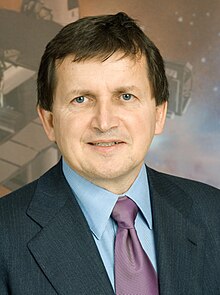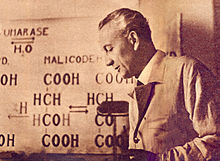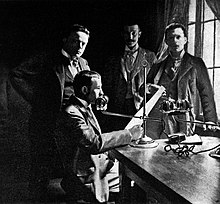Science and technology in Hungary
[6] Hungary's high technology industry has benefited from both the country's skilled workforce and the strong presence of foreign high-tech firms and research centres.
[9] A mining school called "Berg Schola", the world's first institute of technology was founded in Selmecbánya, Kingdom of Hungary[10] (today Banská Štiavnica, Slovakia), in 1735.
During this period, venture capital and private equity funds invested close to 4 billion US Dollars into more than 400 Hungarian enterprises.
However, so-called buyout transactions have accounted for about two thirds of the total volume of those investments, which were aimed at the acquisition of shares in mature companies that have been operating profitably for several years.
This is also reflected by the fact that over the last two decades slightly more than 10% of the total volume of venture capital and private equity investments came from funds focusing on early stage companies.
The remaining close to 90% was invested by private equity funds focusing on more mature companies with greater economic strength.
The letter led directly to the establishment of research into nuclear fission by the U.S. government and ultimately to the creation of the Manhattan Project.
Physicist and engineer Ányos Jedlik invented the first electric motor (1828), the dynamo, self-excitation, the impulse generator, and the cascade connection of capacitors.
[30] Many Hungarian scientists, including Zoltán Bay, Victor Szebehely (practical solution to the three-body problem; Newton the two-body problem), Mária Telkes, Imre Izsak, Louis W. Parker, Erdős, von Neumann, Leó Szilárd, Eugene Wigner, Theodore von Kármán and Edward Teller, emigrated to the United States and made valuable contributions there.
[citation needed] A significant group of Hungarian dissident scientists of Jewish descent who settled in the United States in the first half of the 20th century were called The Martians.
Some internationally well-known figures of today include: mathematician László Lovász, physicist Albert-László Barabási, physicist Ferenc Krausz, chemist Julius Rebek, chemist Árpád Furka, biochemist Árpád Pusztai and the highly controversial former NASA-physicist Ferenc Miskolczi, who denies the green-house effect.
Gabor A. Somorjai As 11th hungarian 1st Theodore von Kármán (1962) 2nd Eugene Wigner (1968) 3rd Edward Teller (1984) Ferenc Krausz Avram Hershko Peter Lax (US) George Feher Gábor Domokos and Albert-László Barabási Rudolf Kálmán 5th: Paul Gyorgyi 75 6th:Peter C. Goldmark 76 7th:Lax 86 8th:Bott 87 9th:Stigler 87 10th: Friedman 88 Miklos Porkolab 2nd hungarian 1st György Radda László Lovász 1st Rudolf Kálmán 2nd György Ligeti Veronica Vaida (Transylvanian-hungarian) Julius Rebek
György Buzsáki (US), Peter Somogyi (UK) & Tamas Freund Endre Szemerédi László Lovász won the Miklos Porkolab (US) Ferenc Krausz[40] Janos Körner 1st:Imre Cziszár Katalin Marton Ferenc Krausz Attila Krasznahorkay Gabor A. Somorjai János Kollár András Vasy 1st: John von Neumann László Székelyhidi 1st Géza Alföldy Örs Legeza Botond Roska Botond Roska Tamás Szepesi Albert-László Barabási Botond Roska Botond Roska for Medicin Botond Roska 2nd: Dudits Gábor Domokos et al. Tamás Vicsek György Buzsáki (US) 1st Stephen William Kuffler Katalin Karikó chemist László Lovász Albert-László Barabási physicist Katalin Karikó 1st: Gàbor Somorjai 2nd György Kurtág 3rd: Péter Eötvös Ferenc Krausz in physics (2nd Wolf in physics) George Lusztig (US) in mathematics Albert-László Barabási Katalin Karikó for Medicin Katalin Karikó 1st Szent-Györgyi 2nd Hersko Ferenc Krausz György Buzsáki ( US) Ferenc Mezei[53] as 1st hungarian Albert-Laszlo Barabási hungarian.
al.[59] Eva Tardos 4th:László Babai 3rd Ajtai 2nd:László Lovász 1st: Leslie Valiant József Balogh 1st: Halmos 2nd:Rudolf Kálmán (Kyoto p.) 3rd: Raoul Bott (Wolf p.) 4th:Peter Lax (Abel p.) 5th:Endre Szemeredi (Abel p.) Botond Roska (SCH/HUN) 1st Hersko,(Nobelprize) Albert-László Barabási,[61] Szekler-Hungarian[62] Tünde Fülöp (S), Szekler-Hungarian Tibor Vellai and Ádám Sturm The first steam engines of continental Europe was built in Újbánya – Köngisberg, Kingdom of Hungary (Today Nová Baňa Slovakia) in 1722.
The first-ever electric rail vehicle manufactured by Ganz Works was a 6 HP pit locomotive with direct current traction system.
The first Ganz made asynchronous rail vehicles (altogether 2 pieces) were supplied in 1898 to Évian-les-Bains (Switzerland), with a 37-horsepower (28 kW), asynchronous-traction system.
Italian railways were the first in the world to introduce electric traction for the entire length of a main line, rather than just a short stretch.
[citation needed] During the interwar and WWII periods, Hungarian designs continued to be developed and flown, however for the most part German types were modified and/or manufactured under license.
Examples include those developed or manufactured by Weiss Manfred and the RMI (Repülo Muszaki Intézet, or Aviation Technical Institute).
Power plants, generators and transformers In 1878, the Ganz company's general manager András Mechwart (1853–1942) founded the Department of Electrical Engineering headed by Károly Zipernowsky (1860–1939).
Engineers Miksa Déri (1854–1938) and Ottó Bláthy (1860–1939) also worked at the department producing direct-current machines and arc lamps.
In autumn 1884, Károly Zipernowsky, Ottó Bláthy and Miksa Déri (ZBD), three engineers associated with the Ganz factory, had determined that open-core devices were impracticable, as they were incapable of reliably regulating voltage.
[109][110][111][112] The Ganz factory had also in the autumn of 1884 made delivery of the world's first five high-efficiency AC transformers, the first of these units having been shipped on September 16, 1884.
[129] The reliability of the AC technology received impetus after the Ganz Works electrified a large European metropolis: Rome in 1886.
The first Hungarian water turbine was designed by the engineers of the Ganz Works in 1866, the mass production with dynamo generators started in 1883.
At the 1896 Millennium Exhibition, Röck and the Esslingen Machine Works presented a 6-tonne capacity artificial ice producing plant.
In 1906, the first Hungarian cold store (with a capacity of 3,000 tonnes, the largest in Europe) opened in Tóth Kálmán Street, Budapest.
Two decades before the introduction of radio broadcasting, residents of Budapest could listen to news, cabaret, music and opera at home and in public spaces daily.
was the special territory of Fiume (Rijeka) (today part of Croatia), where the Hungarian shipping companies, such as the Adria, operated.
Diesel-electric military submarines: The Ganz-Danubius company started to build U-boats at its shipyard in Budapest, for final assembly at Fiume.















